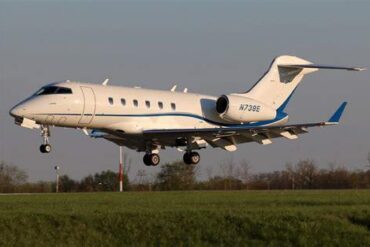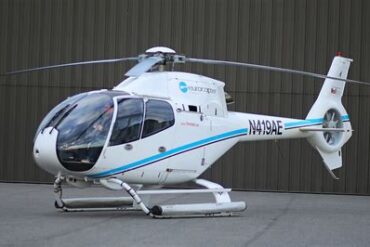The ATR 42-300 is a twin-engine turboprop short-haul regional airliner developed and produced by the French-Italian aircraft manufacturer ATR (Aerei da Trasporto Regionale or Avions de transport régional). Renowned for its versatility and reliability, the ATR 42-300 has been a cornerstone in regional aviation since its introduction in the mid-1980s. In this comprehensive analysis, we delve into the price and operating costs associated with the ATR 42-300, providing potential operators and investors with critical insights into this aircraft’s financial implications.
Market Price of the ATR 42-300
New vs. Pre-Owned ATR 42-300
As of the most recent data, the ATR 42-300 is no longer in production, which means that all available units are pre-owned. The price of a pre-owned ATR 42-300 can vary significantly based on factors such as the aircraft’s age, condition, total flight hours, and maintenance history.
-
Average Price Range: Typically, the price for a used ATR 42-300 ranges from $3 million to $6 million USD. The lower end of the spectrum usually reflects older models with higher flight hours, while the higher end represents well-maintained aircraft with lower hours and recent upgrades.
-
Influencing Factors: Specific factors such as avionics upgrades, interior refurbishments, and engine overhauls can also influence the price. For instance, an ATR 42-300 with recently overhauled engines and updated avionics might command a premium price.
Depreciation and Market Trends
The depreciation rate of the ATR 42-300 is relatively moderate compared to its peers in the regional aircraft market. The aircraft’s reputation for reliability and the ongoing demand for regional turboprops help maintain its market value. However, like all aircraft, it is subject to depreciation, with typical values decreasing by approximately 5-10% annually depending on market conditions.
- Market Demand: The market for the ATR 42-300 remains robust due to the aircraft’s fuel efficiency and suitability for short-haul routes. Regional airlines and charter operators continue to seek out this model, particularly in markets where infrastructure is limited, and the demand for smaller aircraft is consistent.
Operating Costs of the ATR 42-300
Fuel Costs
Fuel efficiency is one of the ATR 42-300’s strong suits, making it a cost-effective option for regional airlines. The aircraft typically consumes around 1,100 liters of fuel per hour. Given current jet fuel prices, this translates to approximately $700 to $1,000 USD per hour in fuel costs, depending on the global fuel market.
- Fuel Efficiency: The ATR 42-300’s turboprop engines are designed for short-haul flights, optimizing fuel consumption and reducing costs for operators. Its fuel efficiency is particularly advantageous on routes with frequent takeoffs and landings.
Maintenance Costs
Maintenance is a significant aspect of the operating costs for any aircraft. The ATR 42-300, with its robust design and reliable components, generally incurs moderate maintenance costs compared to other aircraft in its category.
-
Routine Maintenance: The annual maintenance costs for an ATR 42-300 can range from $300,000 to $500,000 USD. This includes regular inspections, part replacements, and minor repairs.
-
Engine Overhaul: The PW120 engines powering the ATR 42-300 require an overhaul approximately every 8,000 to 10,000 flight hours. An engine overhaul can cost between $500,000 to $1 million USD per engine, depending on the extent of the work needed.
-
Unscheduled Maintenance: While the ATR 42-300 is known for its reliability, unscheduled maintenance events can still occur, potentially adding to operational costs. Operators typically budget an additional 10-15% of the annual maintenance costs for these unforeseen expenses.
Crew and Training Costs
Crew costs are another critical component of the operating expenses for the ATR 42-300. This includes the salaries and training costs for pilots, co-pilots, and cabin crew.
-
Pilot Salaries: The average annual salary for a pilot flying the ATR 42-300 is around $70,000 to $120,000 USD, depending on experience and the region of operation. Co-pilots typically earn between $40,000 and $70,000 USD annually.
-
Training: Initial and recurrent training costs are also essential considerations. Training programs for ATR 42-300 pilots can range from $20,000 to $50,000 USD per pilot. These costs cover simulator training, ground school, and other necessary certifications.
-
Cabin Crew: The annual salaries for cabin crew members range from $30,000 to $50,000 USD, depending on experience and the airline’s pay structure.
Insurance Costs
Aircraft insurance is mandatory and represents a significant portion of the operating costs. The cost of insuring an ATR 42-300 varies based on the aircraft’s value, the operator’s safety record, and the regions in which it operates.
-
Hull Insurance: The average annual cost for hull insurance for an ATR 42-300 is around $40,000 to $70,000 USD. This insurance covers physical damage to the aircraft.
-
Liability Insurance: Liability insurance costs typically range from $30,000 to $60,000 USD annually. This coverage protects against claims arising from accidents, injuries, or damages caused by the aircraft.
Landing and Navigation Fees
Landing and navigation fees are variable costs that depend on the routes flown and the airports used. The ATR 42-300, being a regional aircraft, generally incurs lower fees compared to larger jets.
-
Landing Fees: These fees vary by airport but generally range from $100 to $500 USD per landing for the ATR 42-300. Larger airports with higher traffic volumes tend to charge more.
-
Navigation Fees: Navigation fees are charged based on the distance flown and the airspace used. For regional flights, these fees can range from $200 to $600 USD per flight.
Miscellaneous Operating Costs
In addition to the major cost categories, several miscellaneous expenses contribute to the overall operating costs of the ATR 42-300.
-
Ground Handling: Ground handling services, including baggage handling, aircraft cleaning, and refueling, typically cost between $500 to $1,000 USD per flight.
-
Catering: Catering costs depend on the flight’s duration and the services provided but can range from $10 to $30 USD per passenger.
-
Deicing: In colder climates, deicing services are necessary during winter months. The cost for deicing can vary widely but generally ranges from $1,000 to $3,000 USD per service, depending on the severity of the conditions.
Total Operating Cost per Hour
When all factors are considered, the total operating cost per hour for the ATR 42-300 is estimated to be between $2,500 to $3,500 USD. This estimate includes fuel, maintenance, crew salaries, insurance, landing fees, and miscellaneous costs.
-
Breakdown of Costs:
-
Fuel: $700 – $1,000 USD
-
Maintenance: $400 – $600 USD
-
Crew Salaries: $400 – $600 USD
-
Insurance: $100 – $150 USD
-
Landing and Navigation Fees: $300 – $800 USD
-
Miscellaneous: $200 – $350 USD
Conclusion
The ATR 42-300 offers a compelling mix of affordability and efficiency, making it a viable option for regional operators. While the initial acquisition cost is relatively low compared to newer aircraft, operators must carefully consider the ongoing operating costs, which can vary based on numerous factors. However, with its fuel efficiency, reliability, and adaptability, the ATR 42-300 remains a strong contender in the regional aviation market, delivering value to those who operate it effectively.


















